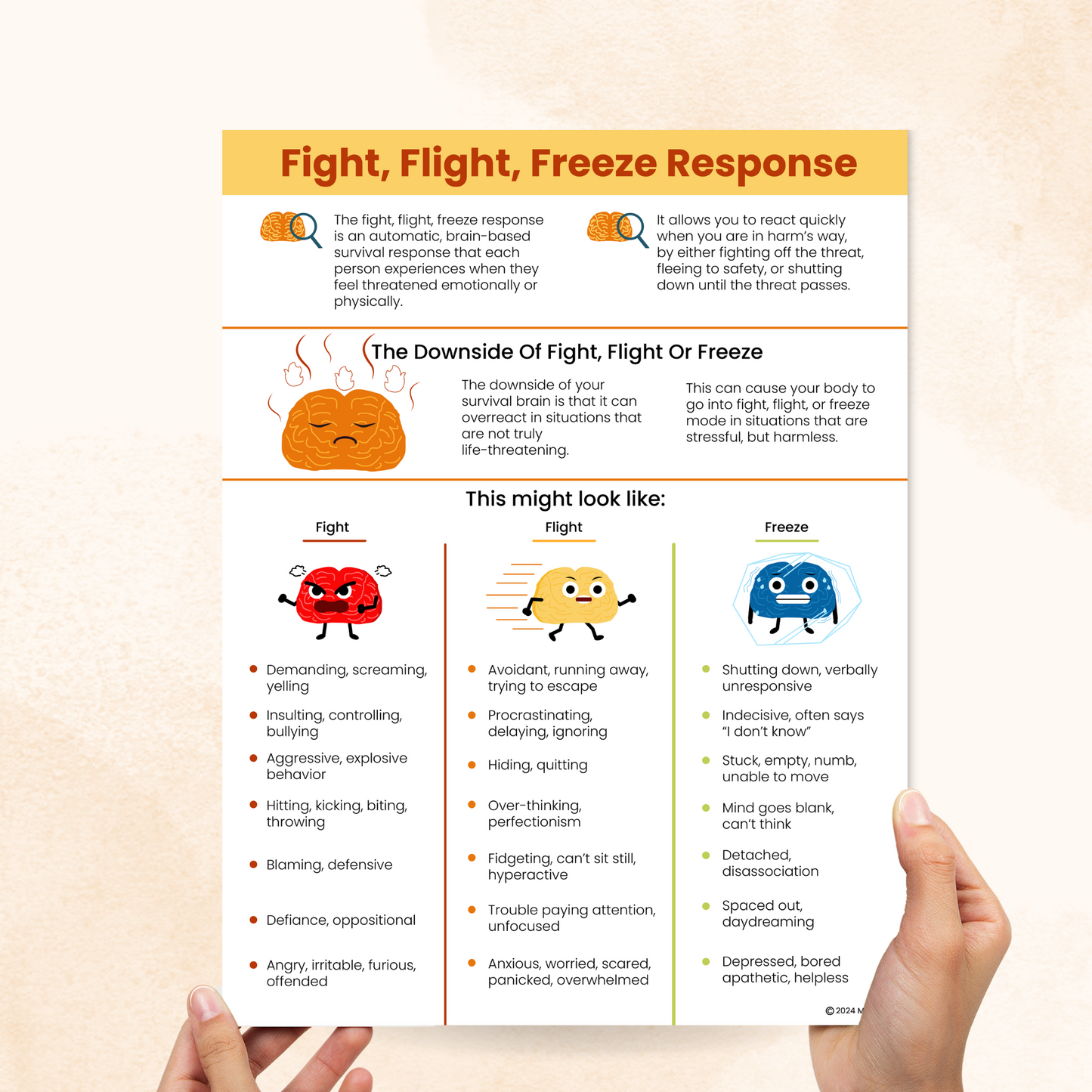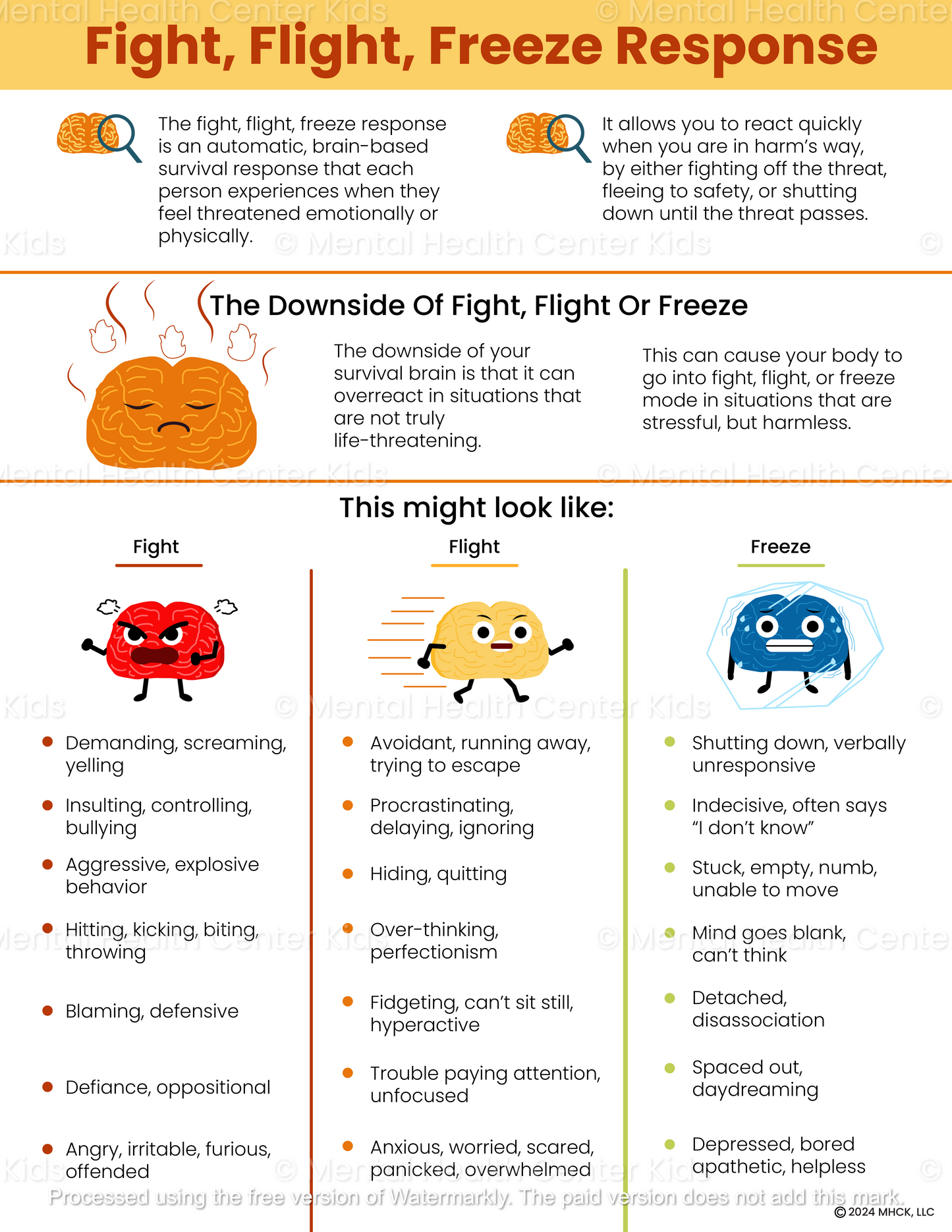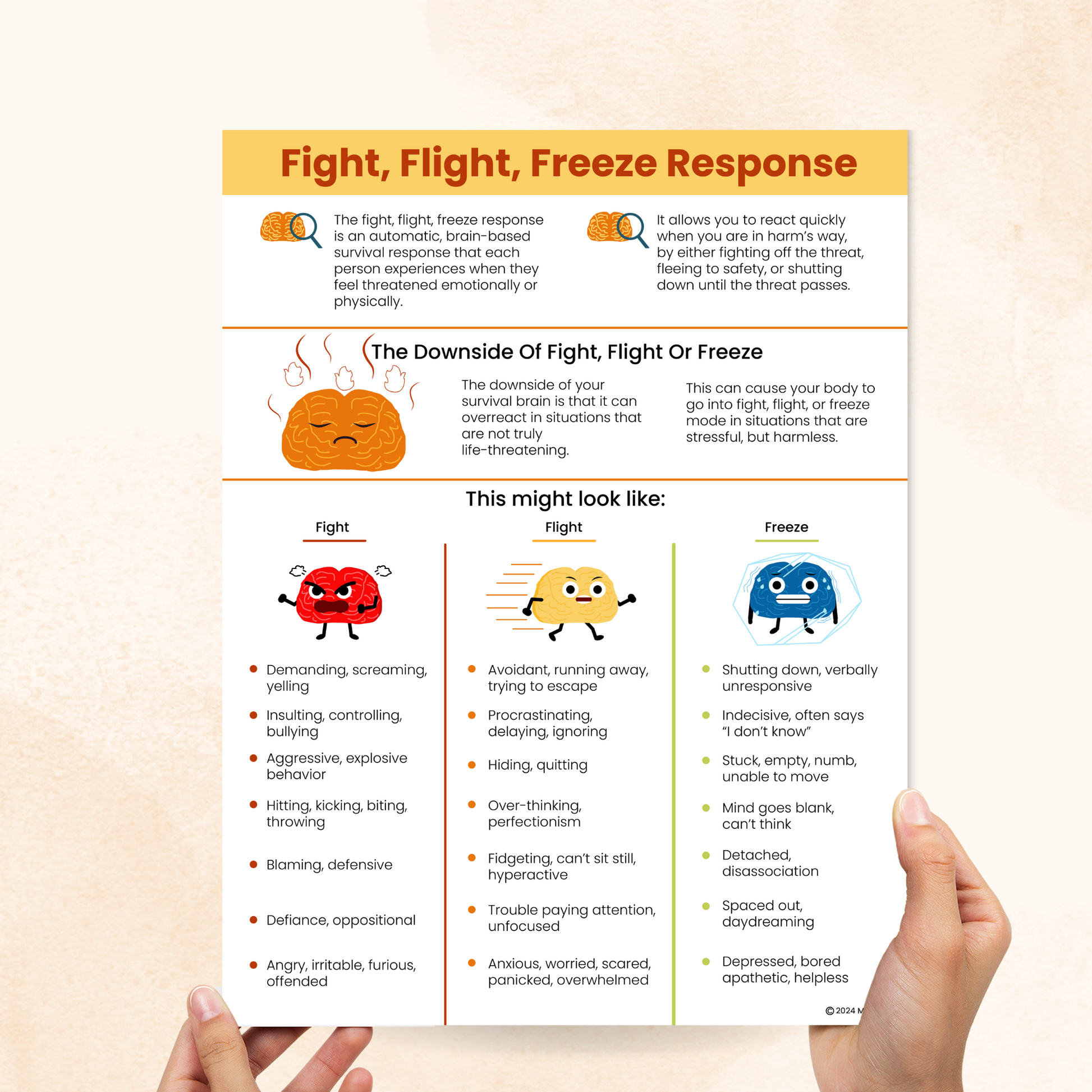Fight, Flight, Freeze Response



The fight, flight, freeze response is how the body naturally reacts when it senses danger. In stressful situations, individuals might prepare to face the threat (fight), run away from it (flight), or stay still and quiet (freeze) as a way to protect themselves. Although these reactions can help in staying out of danger, they can lead to increased stress and affect a person’s decision-making.
The Fight, Flight, Freeze Response is a simple resource for kids and teens to learn about their bodies' natural reactions to danger and how these responses manifest in their daily lives. The first part of the handout defines the fight, flight, and freeze response, whereas the second part explains its potential downsides. The last part describes its signs and symptoms.
Using this handout helps increase one’s awareness of their reactions to stress, which can motivate them to brainstorm stress management tips. To deepen their understanding of the fight, flight, and freeze response, parents and teachers can prompt them to engage in group storytelling after reviewing the handout.
For instance, they could craft a narrative where they’re faced with a stressor, like a crowded room or a major exam. As a group, they can explore how characters might react and explore healthier coping strategies, such as deep breathing and talking to someone.
*This item is an instant digital download. A link to download your files will be emailed to you once payment is confirmed.
Want more resources like this? Check out our full catalog of stress management worksheets and handouts.
References:
- Niermann, H. C., Figner, B., Tyborowska, A., Cillessen, A. H., & Roelofs, K. (2018). Investigation of the stability of human freezing-like responses to social threat from mid to late adolescence. Frontiers in Behavioral Neuroscience, 12. https://doi.org/10.3389/fnbeh.2018.00097
- Romeo, R. D. (2013). The Teenage Brain: The Stress Response and the Adolescent Brain. Current Directions in Psychological Science, 22(2), 140–145. https://doi.org/10.1177/0963721413475445
- Schmidt, N. B., Richey, J. A., Zvolensky, M. J., & Maner, J. K. (2008). Exploring human freeze responses to a threat stressor. Journal of Behavior Therapy and Experimental Psychiatry, 39(3), 292-304. https://doi.org/10.1016/j.jbtep.2007.08.002
- Tyborowska, A., Van den Berg, Y., Hashemi, M. M., Niermann, H. C., Cillessen, A. H., Toni, I., & Roelofs, K. (2023). Neural patterns of threat response in adolescents predict vulnerability for and resilience against internalizing symptoms during COVID-19 waves. Neuroimage: Reports, 3(3), 100177. https://doi.org/10.1016/j.ynirp.2023.100177
- Instant digital download
- File: PDF
- Size: 8.5" x 11"




